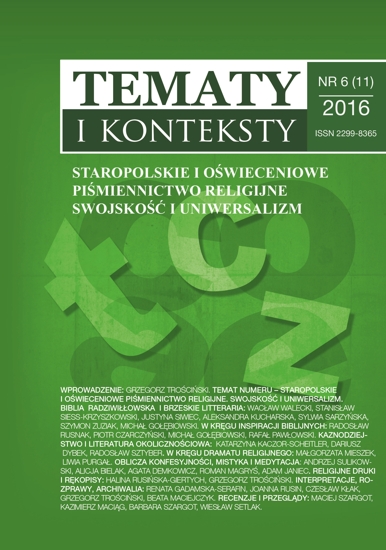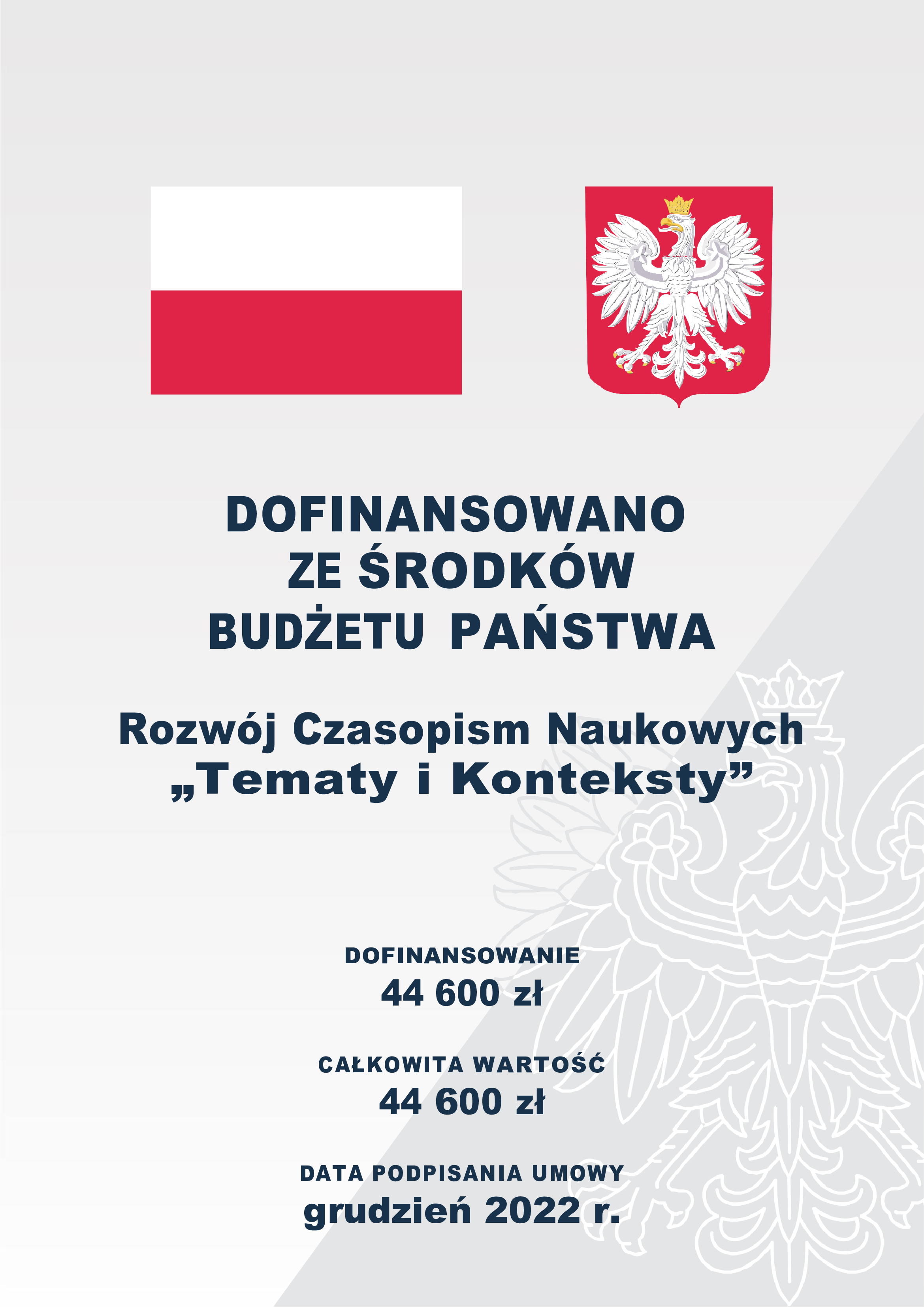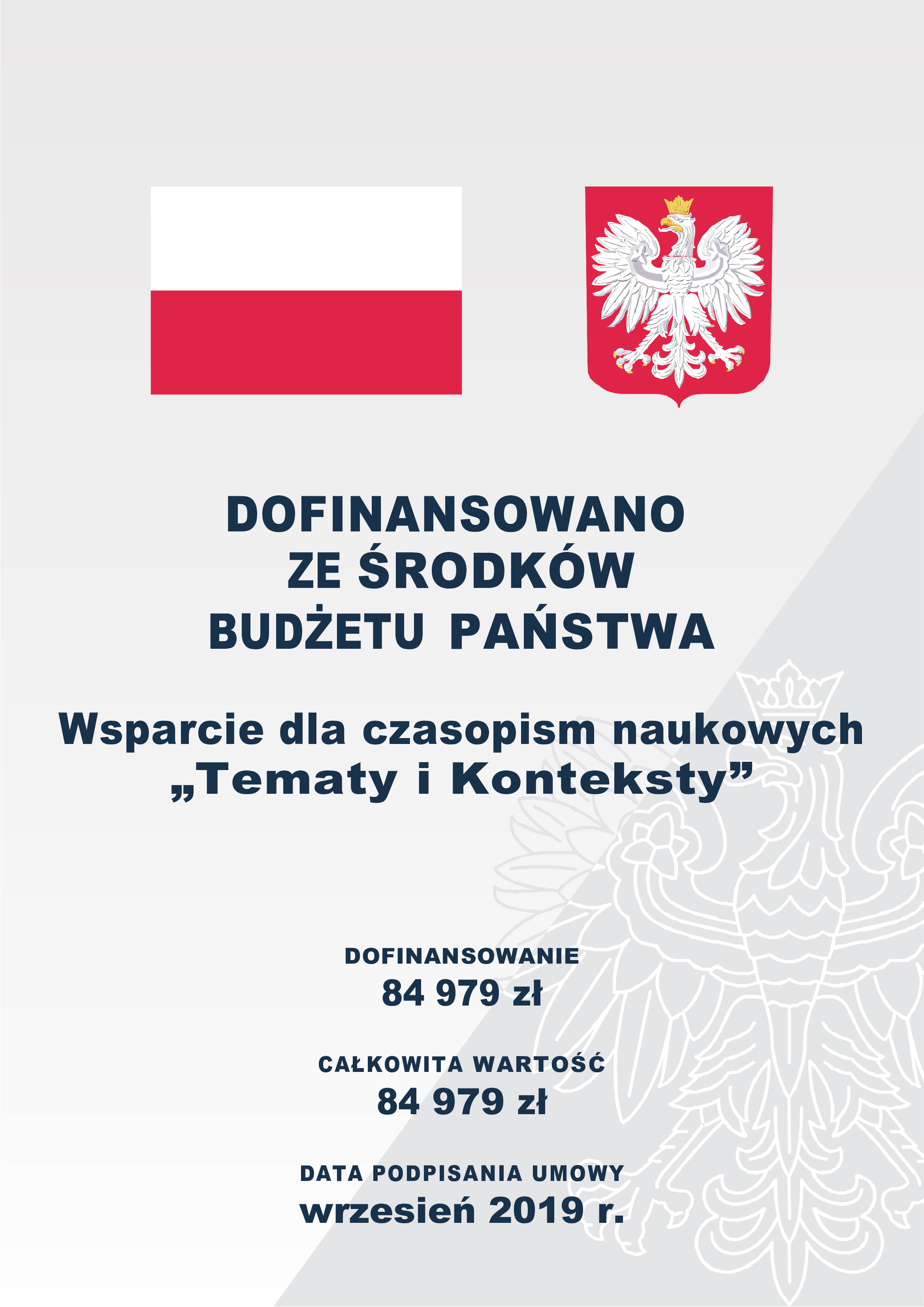The Conceit of the Occasional Sermon Pszczółka w bursztynie by Franciszek Sitański
Keywords:
conceit, conceptual sermon, special sermon, heraldic conceit, panegyric, hagiography, St. Dorothy, role modelsAbstract
The article presents the conceit in the Polish baroque sermon Pszczółka w bursztynie [A Bee in Amber] of a Bernardine Franciszek Sitański. In the sermon the author presents the figure of St. Dorothy; he also draws attention to the virtues of Dorota Kątska, who was the abbess of St. Norbert’s Order in Zwierzyniec (near Cracow) in the 17th century, and most of all he praises the monastic way of life. Biblical and hagiographic arguments, a source of inspiration for the author as an effective means of persuasion, appeal to the imagination of the audience. Metaphors, analogies and comparisons in the sermon prove that Pszczółka w bursztynie is based upon the conceit. By using the arguments Sitański was trying not only to move the recipients, but mainly to persuade them to cultivate virtues presented by Christian heroines.
Downloads
Downloads
Published
How to Cite
Issue
Section
License
Copyright (c) 2016 Tematy i Konteksty

This work is licensed under a Creative Commons Attribution-NonCommercial-NoDerivatives 4.0 International License.




